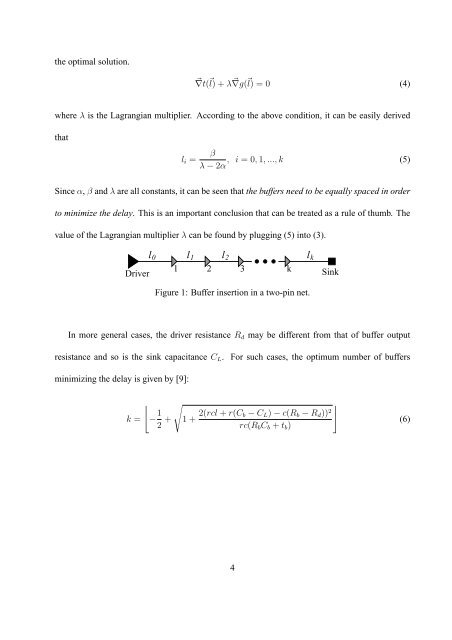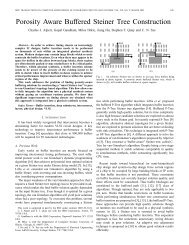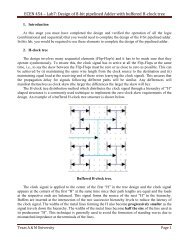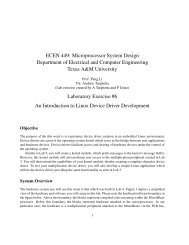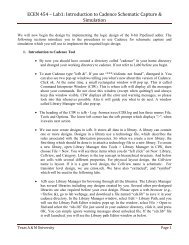Buffer Insertion Basics - Computer Engineering & Systems Group ...
Buffer Insertion Basics - Computer Engineering & Systems Group ...
Buffer Insertion Basics - Computer Engineering & Systems Group ...
You also want an ePaper? Increase the reach of your titles
YUMPU automatically turns print PDFs into web optimized ePapers that Google loves.
the optimal solution.<br />
⃗∇t( ⃗ l) + λ ⃗ ∇g( ⃗ l) = 0 (4)<br />
where λ is the Lagrangian multiplier. According to the above condition, it can be easily derived<br />
that<br />
l i =<br />
β<br />
, i = 0, 1,...,k (5)<br />
λ − 2α<br />
Since α, β and λ are all constants, it can be seen that the buffers need to be equally spaced in order<br />
to minimize the delay. This is an important conclusion that can be treated as a rule of thumb. The<br />
value of the Lagrangian multiplier λ can be found by plugging (5) into (3).<br />
Driver<br />
l<br />
l l l<br />
2 3 k<br />
0 1 2 k<br />
1<br />
Sink<br />
Figure 1: <strong>Buffer</strong> insertion in a two-pin net.<br />
In more general cases, the driver resistance R d may be different from that of buffer output<br />
resistance and so is the sink capacitance C L . For such cases, the optimum number of buffers<br />
minimizing the delay is given by [9]:<br />
k =<br />
⌊− 1 2 + √<br />
1 + 2(rcl + r(C b − C L ) − c(R b − R d )) 2<br />
rc(R b C b + t b )<br />
⌋<br />
(6)<br />
4


